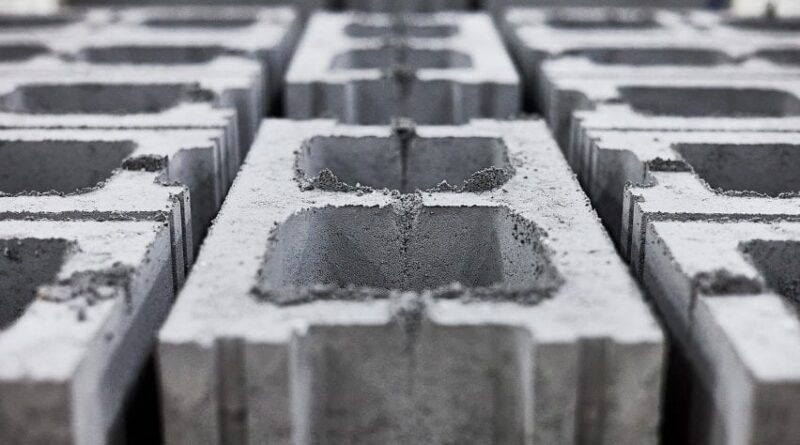Carbon Cured Concrete Sustainable Solution for Greener Future-24
Carbon Cured Concrete
For ages, concrete, a basic building material, has served as the foundation of contemporary infrastructure. But it contributes to climate change because its production is linked to large carbon emissions. In order to lessen the negative environmental effects of conventional concrete while preserving its strength and structural integrity, scientists and engineers have created creative solutions, such as Carbon Cured Concrete.
What is Carbon Cured Concrete?
Concrete that uses carbon dioxide (CO2) as part of its curing process is known as carbon-cured concrete. Concrete that has been carbon-cured uses CO2 to speed up the curing process and improve strength and durability. Conventional concrete, on the other hand, just uses water for hydration. In order to complete this process, carbon dioxide emissions from industry or the atmosphere must be captured and solidified inside a concrete matrix.
How Carbon Cured Concrete manufactured?
There are multiple phases involved in the manufacturing of carbon-cured concrete
Capture of CO2 Emissions: Carbon dioxide emissions are extracted either directly from the atmosphere or from industrial sources like cement kilns or power plants. Specialized technology such as carbon capture and storage (CCS) systems are used to do this.
Injection into Concrete Mix: Next, during the batching process, the trapped CO2 is injected either straight into the concrete mixer or into the mixing stage of the mixture.
Curing Phase: After adding CO2, the calcium ions generated during cement hydration combine with the CO2 to form calcium carbonate (CaCO3), a mineral that strengthens and preserves the concrete.
Hardening and Strength Development: Compared to ordinary concrete, the carbonation process speeds up the concrete’s hardening, resulting in shorter curing durations and greater early-age strength.
Follow Our Digiknowledge.co.in Page for Latest update about Bikes, Cars, Sports, , Life style and many more.
What are the Environmental Impacts and Sustainability of Carbon Cured Concrete?
The environmental advantages of carbon-cured concrete add to its overall sustainability. These benefits include:
CO2 Sequestration: Carbon-cured concrete helps reduce greenhouse gas emissions into the atmosphere by absorbing and using CO2 emissions. This lessens the environmental impact of producing concrete.
Resource Efficiency: Waste emissions can be used as a useful supply of construction materials when CO2 is added to the concrete mix. This improves resource efficiency. In addition to reducing dependency on virgin materials, this encourages circularity in resource management.
Energy Savings: Because carbon-cured concrete dries more quickly than other types, less energy is needed for heating and maintenance during manufacturing. This can result in energy savings for the concrete industry.
Lifecycle Benefits: Carbon-cured concrete has a longer lifespan and greater durability, which lessens the need for regular replacements and repairs. By doing this, the environmental impact of maintenance operations is reduced and the service life of structures is increased.
Strength and Performance of Carbon Cured Concrete-
When it comes to performance and strength, carbon-cured concrete is on par with or better than regular concrete.
Compressive Strength: As a result of its expedited curing, carbon-cured concrete frequently exhibits stronger early-age compressive strength. This feature makes demolding quicker and building efficiency higher.
Durability: The carbonation process produces a denser microstructure, which improves resistance to chemical corrosion and freeze-thaw cycles, among other environmental stresses.
Flexural and Tensile Strength: Although carbon-cured concrete may show slightly different mechanical characteristics from conventional concrete, it nevertheless performs on par with or better than industry norms in these areas overall.
Admixture compatibility: The composition of carbon-cured concrete can be altered to accept a range of admixtures and additives, enabling the modification of characteristics including workability, setting time, and resistance to particular environmental factors.
What are the Benefits of Carbon-Cured Concrete ?
Advantages of Carbon-Cured Concrete: One of the main benefits of carbon-cured concrete is its capacity to absorb carbon dioxide emissions, which helps to minimize the carbon footprint that comes with the manufacture of concrete. This novel substance assists in reducing greenhouse gas emissions and battling climate change by employing captured CO2.
Enhanced Strength and Durability: When carbon-cured concrete is compared to conventional concrete, it frequently shows higher compressive strength and longer durability. Denser microstructures and better cement particle bonding are produced during the carbonation process, making the material more durable and resilient.
Shorter Curing Times: Concrete reaches its desired strength in less time thanks to the addition of CO2, which quickens the curing process. Project delivery efficiency may rise as a result, and building schedules may be shortened.
Versatility and Compatibility: A viable and scalable solution for the construction sector, carbon-cured concrete may be produced using current machinery and infrastructure. Its adaptability to diverse project requirements guarantees conformity with a range of performance standards and specifications.
Sustainability over Time: Carbon-cured concrete helps to store carbon over Time by trapping CO2 inside the concrete matrix, which lessens the environmental effect of construction operations. Circularity in materials management and the shift to a low-carbon economy are two goals that this sustainable strategy supports globally.
In conclusion
A key development in environmentally friendly building methods, carbon-cured concrete provides a workable way to lessen the environmental effect of producing concrete without sacrificing structural performance or integrity. This novel material aids in the shift towards a more robust and environmentally friendly built environment by using CO2 emissions to improve the strength and longevity of concrete.
Carbon-cured concrete is positioned to play a significant part in creating a sustainable future for future generations as research and development activities continue to improve production procedures and maximize performance.
Does carbon make concrete stronger?
It not only makes the concrete stronger but also more resilient to freezing, thawing, and cracking, as well as less prone to water penetration.
What is the use of carbon in concrete?
The carbon in carbon reinforced concrete allows for more slim designs while also making the components far more robust because carbon does not corrode. There is also a good chance of material and resource savings because a concrete cover is no longer necessary for corrosion prevention.
What is the durability of CarbonCure concrete?
The overall acceptability of a class C1 mix made using CarbonCure Technology was established by a thorough durability assessment. The carbon dioxide has no effect on the concrete’s fresh qualities. In test ages up to 91 days, the compressive strengths increased by 1 to 9%.




